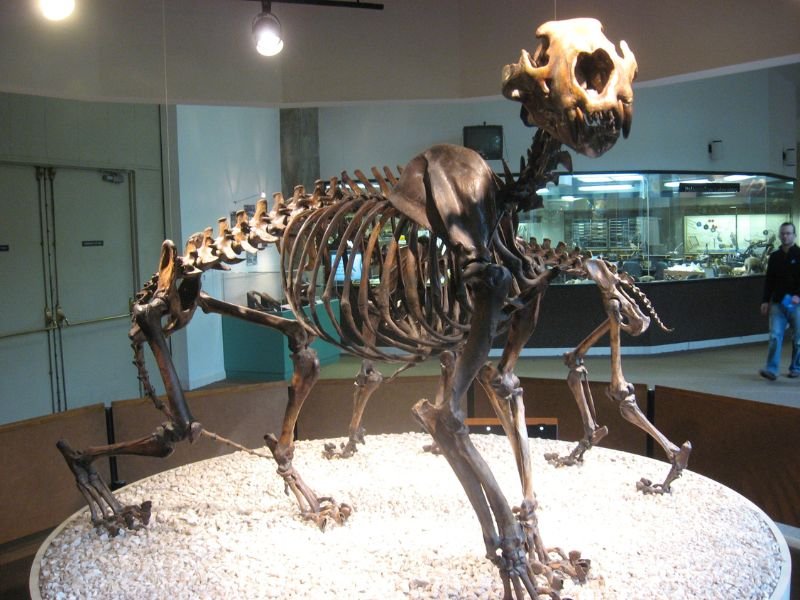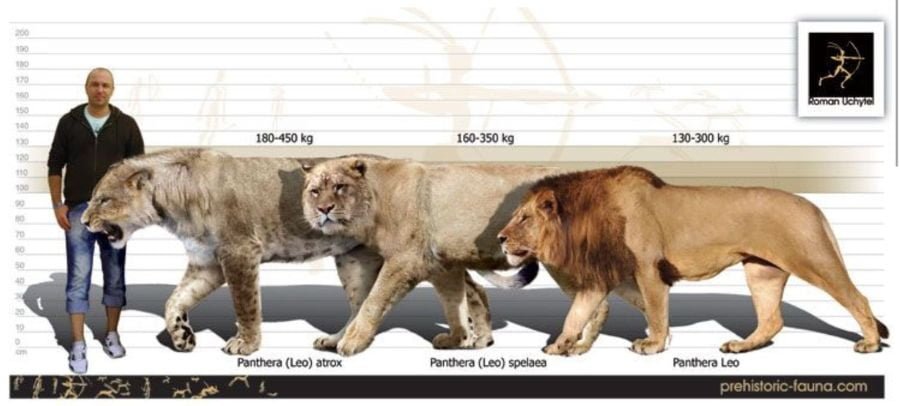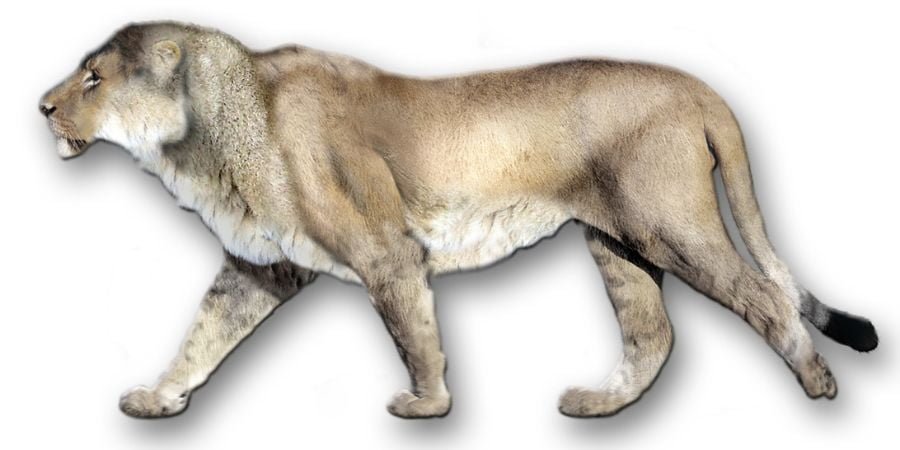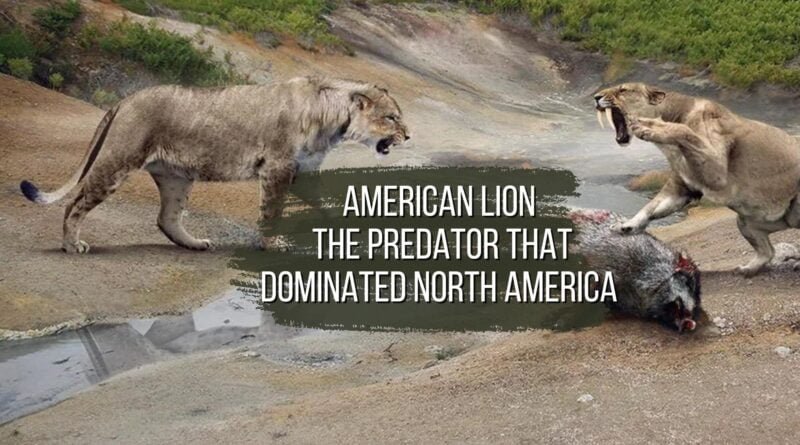Meet the American lion: the prehistoric predator that dominated North America
One of the most feared and admired predators throughout human history. When we think of these felines, we automatically think of African animals. But, did you know that in the past they were much more widely spread around the world? In Spain, Greece, Turkey, the Middle East, and even Europe and America, lions were sighted. The oldest fossils of these animals were found in Africa, the place of origin of these imposing felines. But, sculptures from more than 40 thousand years ago were found in Germany and cave paintings in the Chauvet Cave, in France, and among these lions, is the American lion, which we’ll talk about in this article.

Panthera atrox
During the Middle Pleistocene epoch, about 300,000 years ago, populations of Asiatic lions migrated to North America. With this, scientists believe that it was from these lions that the American lion, or Panthera leo atrox, evolved. Its exact origin is uncertain, so scholars work with hypotheses. What is known for sure is that this feline inhabited North America until the end of the Pleistocene epoch, 100,000 years ago.
The oldest fossils of the American lion have been found in southern Alaska and Alberta, Canada. There are records of fossils found even in Latin America, more specifically in Peru.

Physical features
It was one of the largest felines that lived in our history, with an average weight of 800 to 1,190 pounds. Some studies even suggest that they could reach an impressive 1,760 pounds, over 5 feet in height and more than 9 feet long. Males were relatively larger than females, thus indicating sexual dimorphism, very common in the animal kingdom.
There were similarities between American lions and modern African lions, such as the dentition. The difference was that prehistoric lions’ canines were much longer and thicker than those of their modern-day relatives. Although both had a mane. In American lions, it was less dense and shorter than those of modern lions, darker and duller in color. Scholars also believe that American lions had a kind of mane or tuft of black hair at the end of their tails.

Habitat and food
Scientists have found fossils of the American lion in several locations in the United States and Canada, being considered the most important paleontological sites in California and New Mexico.
Due to the different locations in which they were found, it is believed that the American lion lived in diverse habitats, such as forests, deserts, and grasslands. Also, it is believed that they were animals quite adaptable to Pleistocene conditions.
Their food was carnivorous, like modern-day lions and it is believed that they occupied the top of the food chain at the time. As one of the largest felines that ever lived, it was capable of hunting large and powerful prey such as mastodons and giant ground sloths, as well as other types of animals such as terrestrial herbivores.

Behavior
Little is known about the behavior of the American lion. But, scientists believe that they were social and lived in groups, as with modern lions, however, with the difference that they hunted alone or, at most, in pairs.

The American lion extinction
At the beginning of the Holocene epoch, the extinction of the megafauna of herbivores took place. Probably the disappearance of the American lion is linked to this event, which occurred about 10 thousand years ago.
According to what is known about human history, the first human beings to inhabit North America were the Native Americans, who arrived in those lands about 15,000 years ago. That is to say, there were still these huge felines living there. There are records of fossil remains of the American lion that were found in the Paleolithic camps of Native Americans, which suggests that these animals were hunted by the Native people.
Conclusion
Just like the American lion, which lived with Native people thousands of years ago, so many other animals have already become extinct and we will never meet them alive. We must learn from the past and fight to protect the animals that remain. According to the IUCN, in South America alone, there are currently more than 2,000 species on the red list of threatened species. 25 other species, also in Latin America alone, are already extinct. We must do our part in this fight. Can we count on you?
Till next time! ♥




